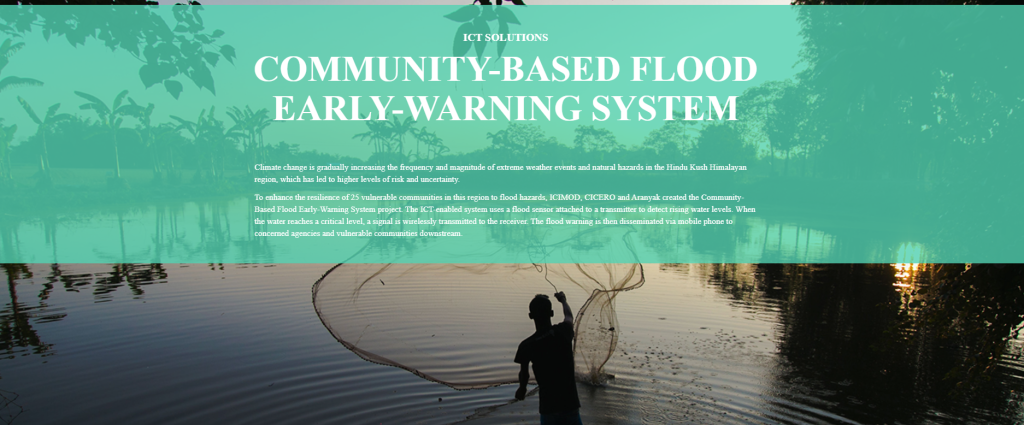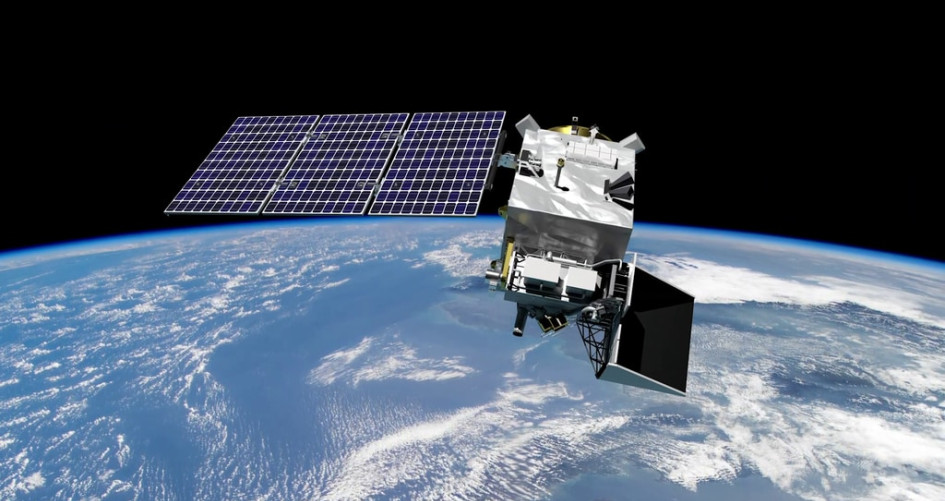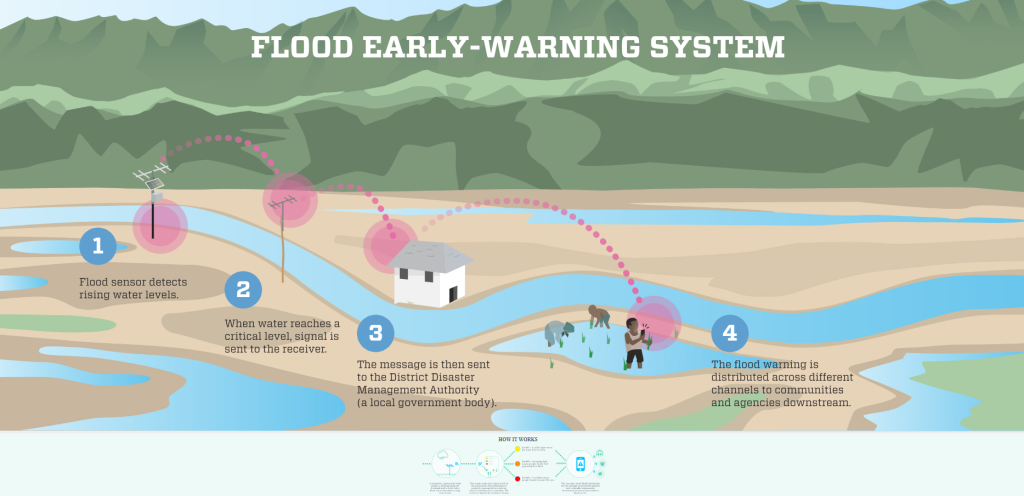The United Nations Framework Convention on Climate Change
Realising Early Warnings for All: Innovation and Technology In Support of Risk-Informed Climate Resilience Policy and Action
Positioned as one of the flagship reports of the UN Secretary General’s Early Warnings for All (EW4All) initiative, the joint Technology Executive Committee (TEC) and the Group on Earth Observations (GEO) policy brief highlights the essential role of climate technology policies and scalable fit-for-purpose technology solutions in improving climate information and disaster risk knowledge, enhancing the effectiveness of multi-hazard early warning systems (MHEWS).
- At COP 29, TEC and GEO launched the policy brief at the Earth Information Day 2024.
- Policy brief has informed the Global status of multi-hazard early warning systems 2024 and its section 3.2.5. which focuses on Technology and innovation for risk knowledge.
- News Article: UN Climate Change’s Technology Executive Committee and Group on Earth Observations Launch Policy Brief to Bolster Climate Resilience with Early Warning Technologies
Click to download Additional language versions of the Key Messages & Recommendations:Arabic, Chinese, English, French, Russian, & Spanish | Realising EW4All: Innovation and Technology in Support of Risk-Informed Climate Resilience Policy and ActionThe joint policy brief:Provides overview of the relevant technology policy and implementation needs and priorities of countries, including analysis of national action and planning documents, including NDCs, NAPS and TNAs;Showcases a wide array of scalable technology measures, platforms and services and their applications for improving risk knowledge and information to advance MHEWS in different country or regional contexts;Presents key findings and recommendations for Parties, international organisations and stakeholders to scale up policies and implementations with fit-for-purpose technology solutions. |
Key Messages and Recommendations
The brief’s executive summary, which also serves as TEC’s key messages and recommendations for consideration at COP29 and CMA6 (*) is available in Arabic, Chinese, English, French, Russian, and Spanish. It offers a high-level summary of the key findings and recommendations for Parties, international organisations and all stakeholders to scale up innovation and MHEWS technology solutions with six action points:
- Consider MHEWS technologies when preparing and updating NDCs, NAPs, TNAs and other documents;
- Invest in multisectoral technology solutions;
- Leverage international initiatives and public-private partnerships;
- Support the integration of technologies into projects to promote local stakeholder engagement;
- Build the technical capacity of stakeholders in developing countries;
- Leverage the global community of scientific experts and innovators
(*) See the Joint annual report of the TEC and the CTCN for 2024 (p.25-26)
- Leverage the global community of scientific experts and innovators

Early Warning Technologies Can Be Game-Changers for Climate Adaptation
14 March 2023

Credit: NASA
UN Climate Change, 14 March 2023 – Early Warning Systems are a proven and feasible means of helping people to adapt to climate change. Such systems can provide up to a tenfold return on investment by saving lives and livelihoods in the case of extreme weather events such as ever more intense and frequent storms and floods. And smart, innovative technologies are playing an increasingly important role in making them effective.
These were the key conclusions of a meeting last month of the UNFCCC’s Technology Executive Committee in collaboration with the children and youth constituency of the UNFCCC, which convened a “deep-dive” discussion on Early Warning Systems at the 2023 edition of the Global Sustainable Technology and Innovation Community (G-STIC) Conference in Rio de Janeiro, Brazil.
United Nations Secretary-General António Guterres has made the UN’s “Early Warnings for All” initiative a priority, with the World Meteorological Organization leading the effort. The goal of the initiative is to ensure that every person on Earth is protected by early warning systems within five years. An executive action plan for the initiative was announced at the UN Climate Change Conference COP27 in Sharm el-Sheikh, Egypt, last year.
In Brazil, experts and practitioners discussed specific activities aligned with the plan and the initiative. Participants included representatives of national and local governments, international organizations and intergovernmental processes, the private sector, and youth networks. They shared their insights and experiences relating to emerging and transformational technologies for early warning systems and opportunities and challenges for deploying such technologies.
Some of the key technologies discussed were the use of:
- Artificial intelligence (AI) for detecting, monitoring, and forecasting events, and effectively communicating impending or ongoing disasters tailored to the needs of the target groups. AI can for example help predict collective behaviour in the case of emergencies, allowing better planning.
- Remote-sensing and satellite technology to develop predictions that can avert and minimize climate-induced loss and damage, along with telecommunication services and systems that can assist risk communications and early warnings. For example, a one-day lead-time warning is possible in Belize due to such technology, with the result that the number of hurricane-related casualties in the country has fallen to almost zero.
- Cell-broadcast and location-based SMS for sending and receiving geo-locate messages in areas that are at risk from extreme weather events. In Haiti, for example, automatic messages are sent to cell phones which are tailored based on the recipient’s location to ensure they receive useful information.
- The “internet of things” can enhance the effectiveness of early warning systems in human settlements for both public and private buildings. An example, a sophisticated networked electronic alarm system in South Africa reduces the risks from wildfires by providing live monitoring and SMS alerts to residents and their neighbours, triggering a swift community response.
- Nature-based and nature-inclusive solutions for transformative adaptation and disaster risk reduction. Nature-based solutions are for example the planting and protection of mangroves to diminish the impacts of more frequent storm surges along coastlines.
About the Technology Executive Committee
Created in 2010, the Technology Executive Committee (TEC) is the policy arm of the Technology Mechanism under the UNFCCC, which also serves the Paris Agreement since its adoption. The TEC focuses on identifying policies that can accelerate the development and transfer of low-emission and climate resilient technologies. Specifically, the TEC analyses climate technology issues and develops balanced policy recommendations, supporting countries to accelerate action on climate change. See the TEC documents and briefs for more info.
About the TEC deep-dive session in Rio de Janeiro
The session in Rio de Janeiro was part of scoping activities of the TEC under its rolling workplan for 2023-2027 on emerging and transformational adaptation technologies, and was facilitated by the TEC Chair, Ambrosio Yobanolo del Real. A detailed summary of the discussions the G-STIC Rio will be discussed at the 26th meeting of the Technology Executive Committee that is set to take place from 21-23 March 2023 in Songdo, Republic of Korea. For more updates, check out the TEC meetings webpage or contact the technology team in the UNFCCC secretariat: tec@unfccc.int.

